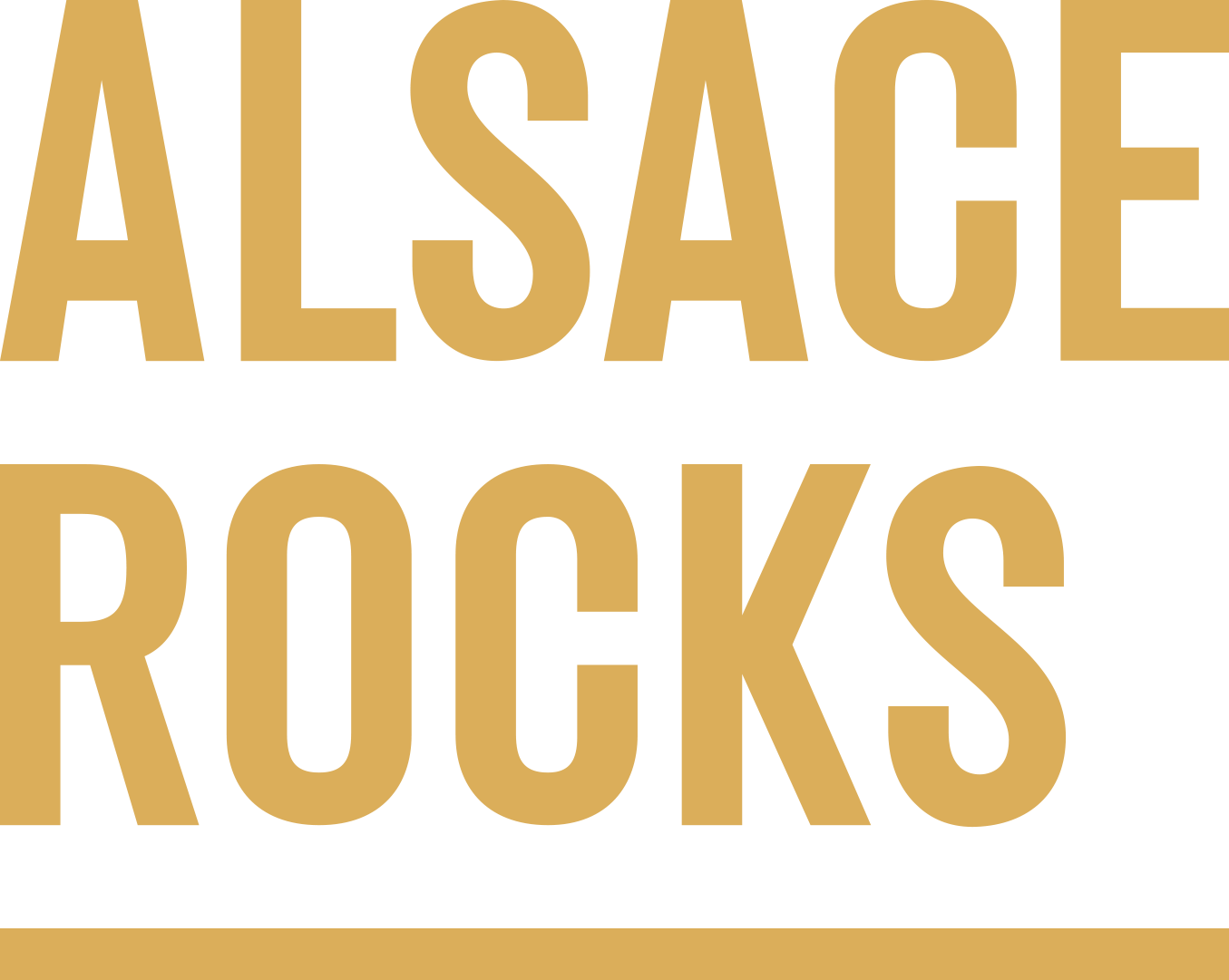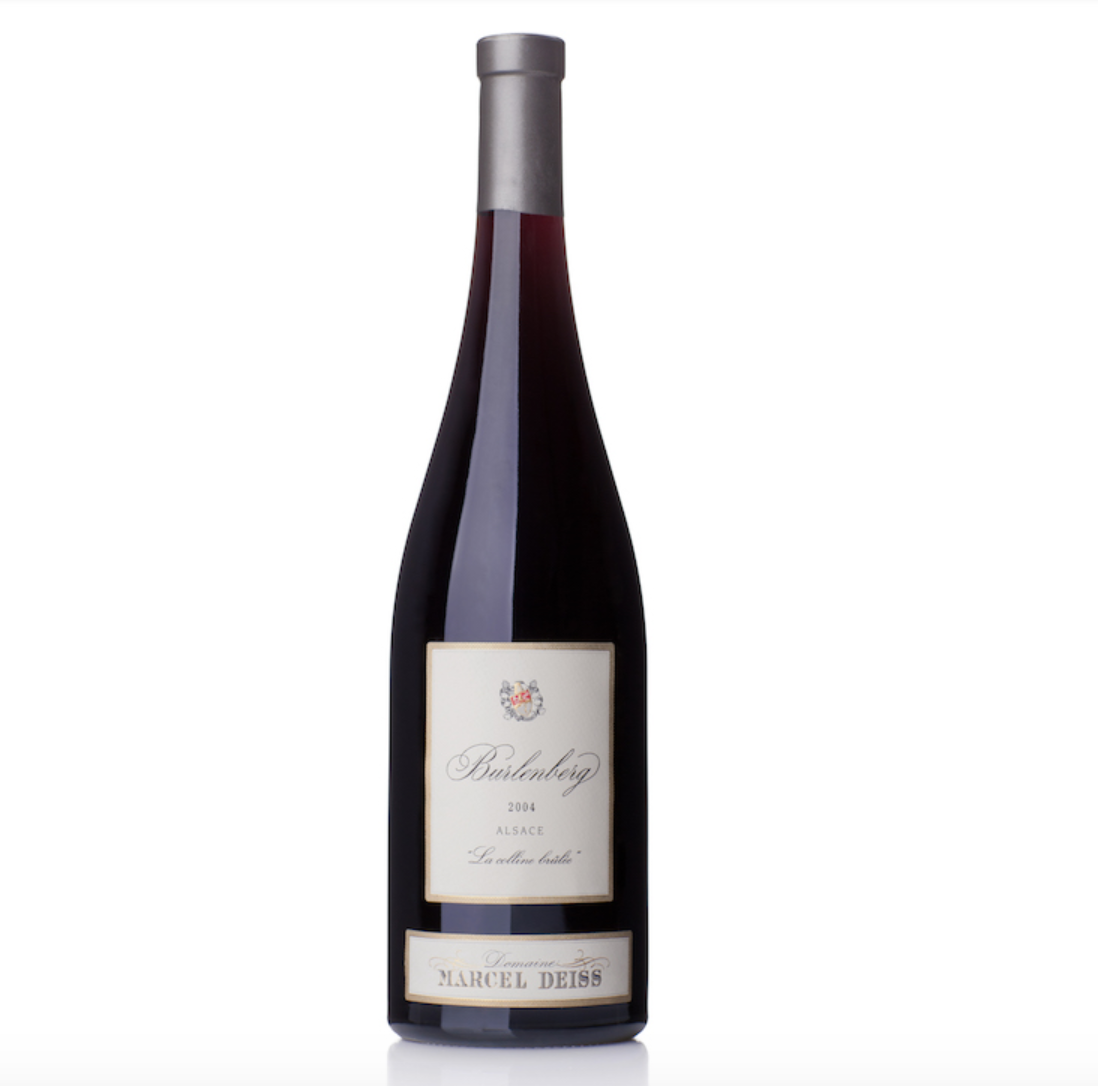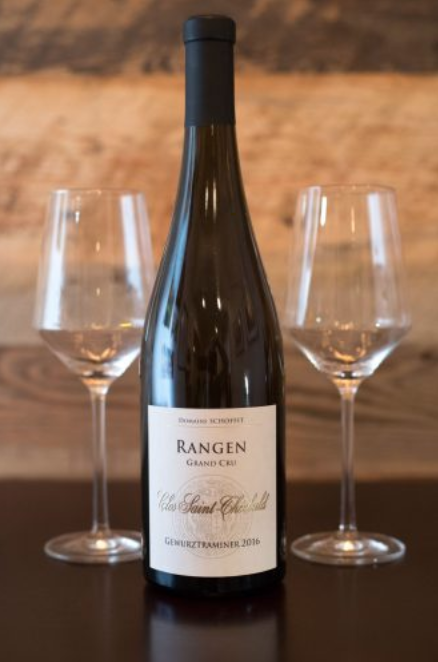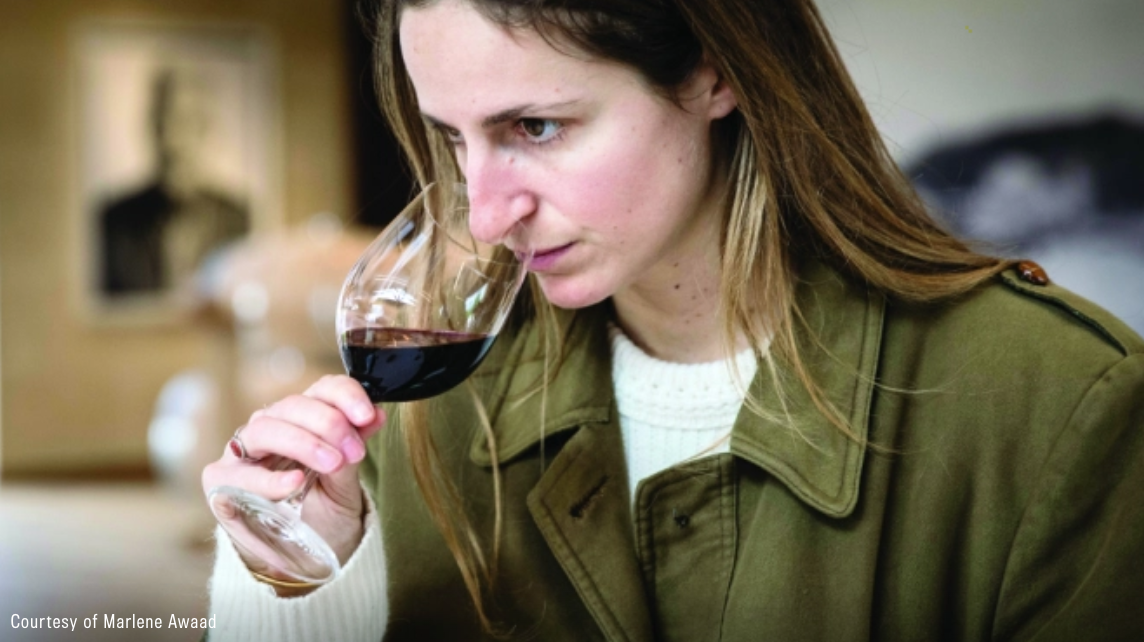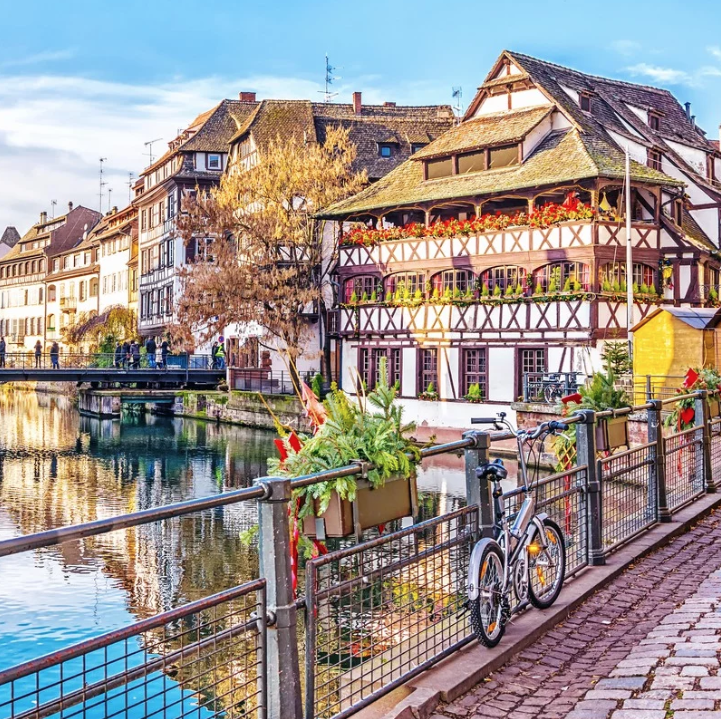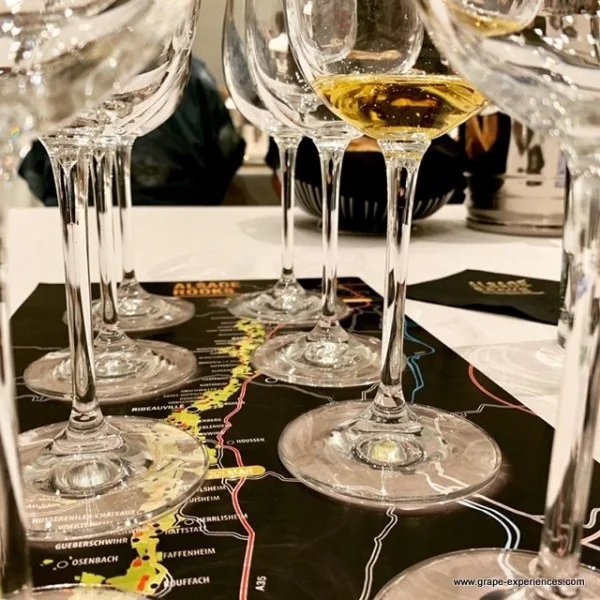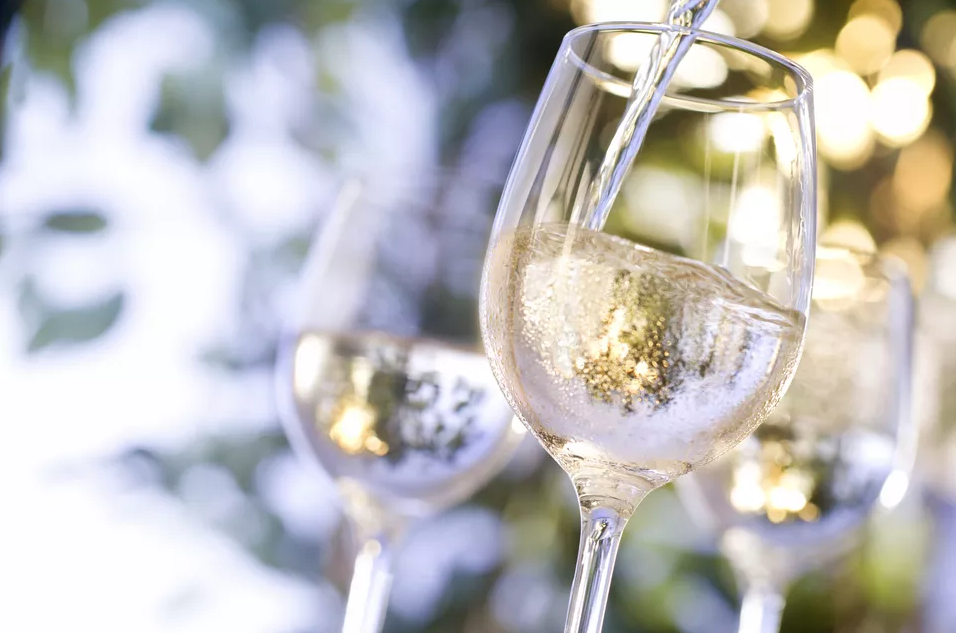We may not be able to travel abroad this spring, but we can travel virtually via our kitchens—by preparing delicious recipes shared by our friends from afar. Many of us have discovered a renewed interest in cooking for this very reason. What better way to connect with others than over a meal and a glass of wine? I have found that simply opening a bottle of wine and inhaling the aroma brings back fond memories of past travels and conversations around the table.
I had planned a return visit to Alsace, France, this spring. While that trip is on hold (for now), I can still enjoy the wines of Alsace…and so can you!
Photo courtesy of Domaine Deiss
Alsace Wine and Food Inspiration
I reached out to my friend Marie-Héléne Cristafaro, oenologist and General Manager at Domaine Marcel Deiss in Bergheim, Alsace, for some food and wine inspiration. Not only is she in charge of all management operations for the winery, but she’s also a superb cook. Marie-Héléne is quite waiflike, and though there is a saying, “never trust a skinny cook,” in this case, that advice is wrong. She graciously supplied me with some of her favorite recipes for spring pairings. I know you’ll love these recipes, and they are especially appropriate for the upcoming Easter and Passover holidays.
In the cellar at Domaine Deiss with Marie-Héléne
Who is Domaine Marcel Deiss?
Domaine Marcel Deiss is one of the premier winemakers in France, with family roots in Bergheim dating back to the 1700s. The family owns 52 acres of hillside vineyards spread throughout nine communes. The vineyards have been organic since 1977, and biodynamic principles are practiced both in the vineyards and the winery. Nothing is added, and nothing is taken away. It’s a very low intervention approach to winemaking that allows the terroir to express itself via the wine.
What makes Deiss so different?
Jean Michel Deiss’s approach to winemaking is based on two key principles: biodynamic farming, and co-planting. Co-planting simply refers to growing many different varietals within the same parcel in the vineyard. Though historically this is common in Alsace, more recently, it has not been widely practiced.
And, according to the rules of the Grand Cru vineyards established in 1983. only four grape varieties are allowed: Pinot Gris, Riesling, Muscat, and Gewürztraminer. Believing strongly in co-planting, Deiss decided to ignore the rules, and fight to change them—which he did (in cooperation with other winemakers) in 2005. The result is truly delicious, complex wines. If you have yet to try them, now is a great time to do so! Here’s the link for online orders in the USA. Wine House
#Alsacerocks
What does biodynamic mean?
A very simplified definition of biodynamic that is easy to understand is biodynamic farming follows organic farming protocol; no herbicides, pesticides, or chemicals of any kind are allowed in the vineyards. A biodynamic calendar is followed for planning vineyard management, like pruning, which is done according to the cycles of the moon.
Read more about biodynamic farming. My personal experience with biodynamic wines has been that I can drink a little more than usual without feeling the alcohol effects and, it just tastes better to me. This is, of course, my subjective point of view. You can read more of the philosophy of biodynamic farming practices at Domaine Deiss
Let’s start cooking and drinking! Here are my two favorite recipes Marie-Héléne shared:
Asparagus with Hollandaise Sauce
Spring in Alsace means fresh asparagus, both white and green. If you happen to be in Alsace, you can find this served everywhere. It is usually paired with a Pinot Gris or a Muscat wine.
Recommended: Domaine Deiss Langenberg Cru d’ Alsace, a field blend that contains Riesling, Pinot Gris, Pinot Beurot, Muscat, and Pinot Noir
This is a very aromatic wine with notes of lemon, grapefruit, and white flowers on the nose. There’s also a nice minerally taste and excellent acidity. This is a complex wine with a nice medium-long finish.
Bonus: this wine can be aged for up to 10 years.
Note: You could also pair the asparagus with a Salmon Tartare or smoked ham; either would be delicious.
Here’s a very nice video demonstration on how to prepare the asparagus and the Hollandaise sauce. It’s in French, but do not worry–you will easily be able to follow along.
Classic Spring Entree: Rack of Lamb
For a classic spring main course, Marie Héléne suggested a roast rack of lamb with rosemary.
This is one of my personal favorites–it’s easy to prepare, yet looks very elegant.
Ingredients
1 rack of lamb (8 ribs)
3 tablespoons rosemary-scented oil
1 teaspoon fleur de sel
1 teaspoon mixed crushed peppercorns
4 rosemary sprigs
4 garlic cloves
1 cup of rosemary honey
Preparation
Wash, peel and cut the zucchini lengthwise.
Mix the honey with a little water and 1 tsp. scented oil.
Using a brush, brush the rack of lamb with this preparation.
Place the rack of lamb in a cast-iron casserole dish, add a spoonful .of the scented oil and garlic cloves.
Cook covered for about 45 minutes, adding a little water if necessary during cooking.
Fry the zucchini in a pan in a spoon of scented oil 5-6 min. Keep warm.
When ready to serve, wedge the sprigs of rosemary into the ribs of the rack of lamb, flambé them and close the lid of the casserole dish for a few minutes so that the entire rack is soaked in the scent of smoked rosemary. Separate the ribs and serve them with the zucchini. Sprinkle with fleur de sel, 5 peppercorn mix, and rosemary flowers for the decor.
Here’s the page for the rack of lamb recipe if you prefer to read it in French.
Wines to pair with rack of lamb
Domaine Deiss Burlenberg Cru d’ Alsace, a red wine that is dominantly Pinot Noir grapes, the only red wine grape grown in Alsace. The Burlenberg vineyard is a calcareous limestone similar to that you can find in Cotes de Nuits in Burgundy. Here’s an alternative link to purchase Domaine Deiss online.
The wine is a full-bodied red wine with a nose of black fruits, such as black raspberries, black currants, and blackberry, as well as nutmeg and smoke. This wine will age 10 – 15 years.
Alternatively, you can pair the lamb with the Domaine Deiss Gruenspiel Cru d’ Alsace. The blend is Riesling, Pinot Noir, and Gewürztraminer. While this is not a traditional pairing, this wine has enough structure, tannins, and acidity to pair well with the meat. It is a dry wine, with aromas of chocolate, smoked pear, and spices. Yum! I’d love to try this combination. Be sure to ask at your local wine and spirits shop–they may be able to order this for you.
I hope you are now feeling as hungry and inspired as I am. I’m off to the kitchen! Please leave your comments below. Let me know if you try any of the recipes, wines, etc.
Thanks again to Marie Hélélne for the recipes and pairing suggestions. Stay tuned, as the next recipe is going to be a light and sweet spring dessert.
